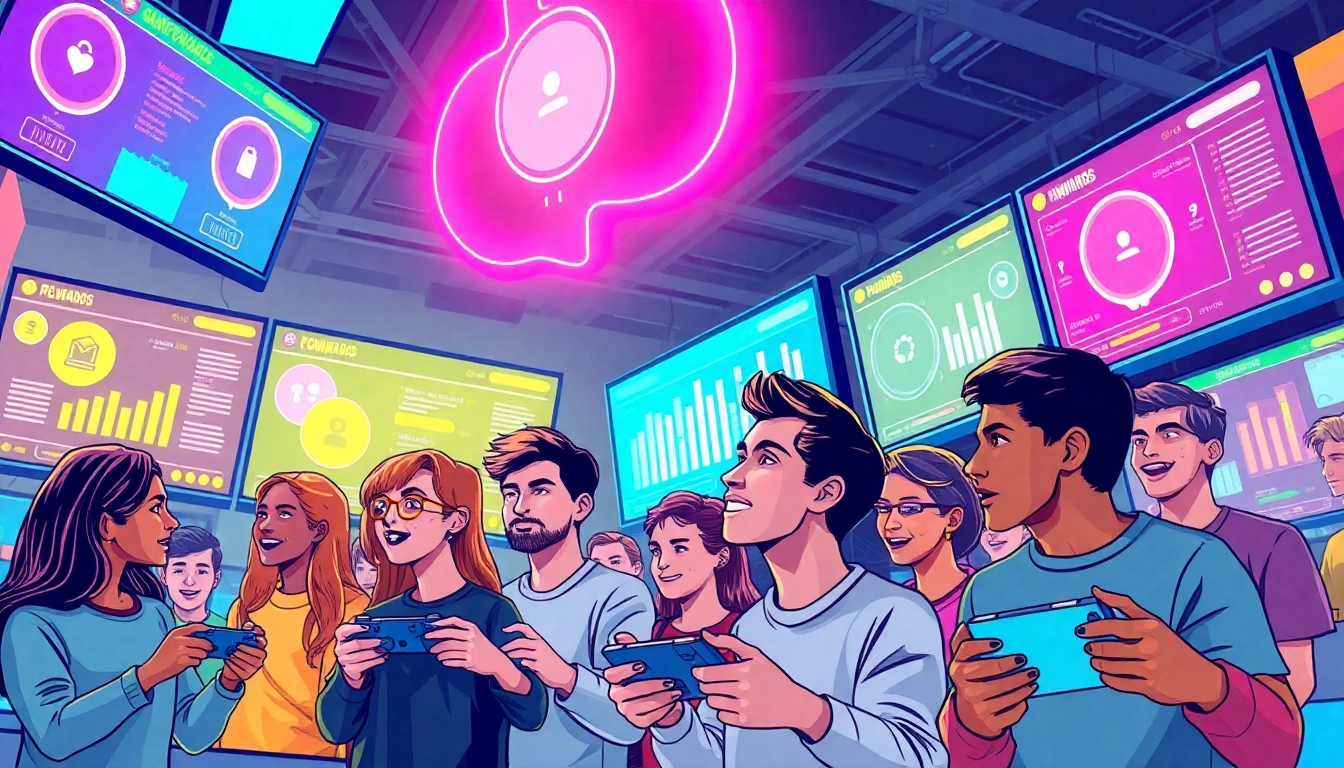The Ultimate Gamification System: 5 Proven Strategies for 2025

Understanding the Gamification System
What is Gamification in Gaming?
Gamification refers to the integration of game-like elements in non-gaming contexts to enhance user engagement, motivation, and experience. In the realm of gaming, it involves incorporating digital rewards, points, challenges, and storylines to elevate the involvement of participants within a game or gaming platform. By leveraging psychological triggers, game developers can create environments where players feel incentivized to explore and interact with the material. This approach does not merely apply to traditional gaming; it extends to various sectors, including education, marketing, and even corporate training, leading to a multifaceted understanding of user interaction.
Benefits of Implementing a Gamification System
Implementing a gamification system carries numerous advantages, particularly in increasing user retention and satisfaction. Some of the primary benefits include:
- Increased Engagement: Gamification keeps players invested in the gaming experience by constantly presenting new tasks and challenges.
- Enhanced Learning: This system can lead to better skill development as players are challenged to complete tasks that require problem-solving and strategic thinking.
- Motivation through Rewards: By offering in-game currency, trophies, or other incentives, developers can motivate players to continue participating and exploring.
- Community Building: Integrating social elements encourages players to interact, collaborate, and form communities, which can strengthen engagement and loyalty.
Common Misconceptions About Gamification
Despite its numerous benefits, gamification is often misunderstood. Common misconceptions include:
- Gamification is Just about Rewards: While rewards are a crucial aspect, gamification is more about creating an experience that keeps users engaged beyond incentives.
- It Only Works in Gaming: Though prevalent in gaming, the principles of gamification can apply broadly across industries, including education and corporate training.
- Gamification is Just a Fad: As more companies recognize its value, gamification is evolving as a sustainable practice, not merely a trend.
Key Components of a Successful Gamification System
Game Mechanics and Dynamics Explained
Understanding the underlying mechanics of games is crucial for creating effective gamification systems. Game mechanics include rules, structures, and systems that liberate actions within a game. Dynamics, however, refers to the behaviors and experiences that emerge when players interact with these mechanics. Key components include:
- Points: Numeric representations of progress or achievement that players can accumulate.
- Badges: Visual tokens representing a player’s accomplishments, often used to foster a sense of achievement.
- Leaderboards: Ranking systems that foster competition among players, often inciting them to improve their performance.
- Challenges and Quests: Specific tasks or adventures designed to engage players and encourage exploration.
Design Principles for Engaging User Experience
Effective gamification systems are built on sound design principles that prioritize user experience. Key principles include:
- Intuitive Navigation: Players should easily understand how to progress within a gamified environment.
- Relevant Storylines: Engaging narratives can captivate players, making their actions feel purposeful and rewarding.
- Visual Appeal: Aesthetically pleasing environments enhance user satisfaction and prolong engagement.
- Feedback Mechanisms: Providing timely and constructive feedback can help players understand their progress and areas for improvement.
Technology Tools to Support Gamification
The integration of technology plays a pivotal role in facilitating a successful gamification system. Some vital tools and technologies include:
- Game Engines: Platforms like Unity and Unreal Engine enable developers to create immersive experiences.
- Analytics Tools: Solutions that track user behavior and engagement metrics, providing insights for future improvements.
- APIs and SDKs: Allow developers to integrate various gamified elements easily within their applications.
- Cloud Technologies: These provide the scalability and accessibility that modern gamification systems require, especially for multiplayer environments.
Challenges in Implementing Gamification Systems
Identifying User Pain Points
Before implementing a gamification system, it is crucial to understand the specific pain points of your target audience. Misalignment between user needs and game mechanics can lead to disengagement. Typical challenges include:
- Lack of Motivation: Determining what drives your audience is essential for selecting the right motivational triggers.
- Failure to Offer Value: Gamification should enhance user experience and not distract or overwhelm users.
Overcoming Technical Barriers
Technical challenges can arise, especially when integrating complex gamification elements into existing systems. Developers must address these barriers by:
- Ensuring Cross-Compatibility: Ensure that gamified features work across different platforms and devices.
- Optimizing Performance: Speed and responsiveness are critical; gamified systems must run seamlessly to maintain user interest.
Measuring Success: Metrics and KPIs
Measuring the success of a gamification system requires establishing clear metrics and KPIs. Important performance indicators can include:
- Engagement Rate: The percentage of users actively participating in challenges or events.
- Retention Rate: The percentage of users returning to the platform after initial interaction.
- User Progression: Tracking how well players advance through levels or challenges can provide insight into the effectiveness of gamification.
Best Practices for Effective Gamification System Design
Creating Compelling Storylines and Objectives
An engaging storyline can significantly enhance player motivation and immersion. When designing narratives, consider the following:
- Personalization: Tailor storylines based on player profiles to create a unique experience for each user.
- Clarity of Goals: Ensure that players understand what they are working towards, providing them with a clear sense of purpose.
Encouraging Social Interaction Among Players
Facilitating social interactions can amplify user engagement and loyalty. This can be achieved by:
- Creating Teams and Guilds: Allow players to form groups, enhancing collaboration and shared experiences.
- Incorporating Chat Features: Enabling communication among users encourages community building and increases enjoyment.
Incorporating Feedback and Adaptability
Integrating user feedback into the gamification system is essential for continuous improvement. Strategies include:
- Surveys and Reviews: Regularly gather player opinions to identify areas for enhancement.
- Real-Time Analytics: Utilize data to assess player behavior and adjust challenges or rewards accordingly.
Future Trends of Gamification Systems in Gaming
Emerging Technologies Shaping Gamification
The future of gamification systems looks promising, driven by advances in technology. Key trends include:
- Artificial Intelligence: AI can analyze user data to create personalized experiences, adapting challenges to suit individual skill levels.
- Augmented Reality (AR) and Virtual Reality (VR): Gamifying experiences through immersive technologies can create engaging environments that enhance user experience.
Case Studies of Successful Gamification Systems
Examining successful implementations of gamification can provide valuable lessons. Notable case studies include:
- Duolingo: This language-learning app effectively employs gamification through daily challenges and rewards, leading to high engagement and retention rates.
- Fitocracy: By combining fitness tracking with gamified elements, this platform motivates users to achieve health-related goals through points and level-ups.
Predictions for the Next Decade
As the understanding of user engagement evolves, so too will gamification tactics. Predictions for the next decade include:
- Increased Personalization: Greater emphasis on tailored experiences to enhance user satisfaction.
- Integration with Blockchain: Enhanced security and transparency in reward systems could be on the horizon, creating trust among users.





